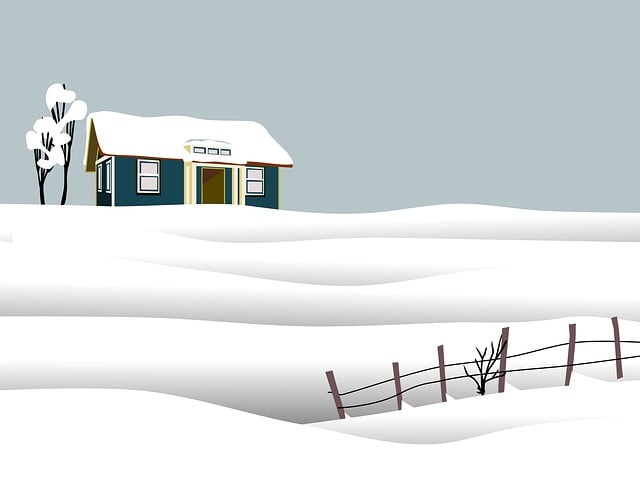Coastal areas present unique challenges for fencing due to relentless wind, salt mist, and extreme temperatures. Investing in durable wooden fencing offers both aesthetic appeal and long-term protection for your property. This article explores effective strategies, from selecting robust wood types to installation and maintenance tips, ensuring your coastal fence stands the test of time while enhancing your outdoor space’s beauty and value.
- Understanding Coastal Weather's Impact on Fencing
- Benefits of Durable Wooden Fencing Materials
- Types of Wood Ideal for Saltwater Exposure
- Installation Tips for Longevity in Coastal Environments
- Maintenance Strategies to Preserve Your Fence
- Enhancing Coastal Property with Stylish Wooden Fences
Understanding Coastal Weather's Impact on Fencing
Coastal areas are known for their unique blend of beautiful landscapes and harsh weather conditions. When it comes to fencing, understanding the impact of salt air, high winds, and regular exposure to moisture is crucial. These elements can significantly degrade traditional fencing materials over time, making them less effective and potentially unsafe.
Durable wooden fencing designed for coastal environments must be made from rot-resistant woods like cedar or treated with specialized preservatives. Additionally, robust construction techniques that include reinforced posts and tight joints are essential to withstand strong winds and heavy waves. Proper maintenance, such as regular cleaning and sealing, further extends the lifespan of these fences, ensuring they remain both functional and aesthetically pleasing in challenging coastal settings.
Benefits of Durable Wooden Fencing Materials
Durable wooden fencing materials offer an array of benefits for coastal areas, where traditional barriers often face significant challenges from harsh weather conditions and corrosive sea air. First, wood that has been treated to withstand these elements provides a natural, aesthetically pleasing barrier that can enhance the landscape without compromising strength or longevity. Unlike vinyl or metal alternatives, properly treated wooden fences seamlessly blend with the coastal environment, allowing for a more harmonious integration of human structures into natural settings.
Moreover, durable wooden fencing is cost-effective and eco-friendly. Treated wood requires less maintenance than its synthetic counterparts, reducing the need for frequent replacements or costly repairs. Additionally, wood is a renewable resource, making it a sustainable choice that minimizes environmental impact while providing a robust, reliable solution for coastal property owners seeking to protect their spaces from the elements.
Types of Wood Ideal for Saltwater Exposure
When it comes to wooden fencing for coastal areas, selecting the right type of wood is paramount. The harsh saltwater environment can accelerate wood decay and corrosion, so durability is key. Two primary types of wood excel in this regard: treated cedar and tropical hardwoods like teak.
Treated cedar, such as Western Red Cedar, has long been a preferred choice for coastal applications. It’s naturally resistant to rot and insect damage due to its dense structure and natural oils. Additionally, it weathers beautifully, developing a distinctive silver-gray patina over time. Teak, on the other hand, is renowned for its exceptional durability and resistance to moisture, making it an excellent option for salt air exposure. This tropical hardwood has a high oil content that repels water and prevents rot, ensuring longevity even in challenging coastal conditions.
Installation Tips for Longevity in Coastal Environments
When installing durable wooden fencing in coastal areas, it’s crucial to consider specific measures that ensure longevity. Begin by preparing the ground, ensuring it is even and compacted to prevent water pooling around the fence posts. This step is vital as moisture can accelerate wood decay. Use treated timber suitable for harsh environments, and pre-drill holes for screws or bolts to avoid splitting the wood. Properly sealing all cut ends and applying a high-quality, water-resistant finish will also protect against coastal elements. Regular maintenance, including reapplying finishes and checking for loose components, is essential to keep your fence in top condition.
Consider the placement of any gates or panels to ensure easy access for maintenance. Ensure proper drainage away from the fence to prevent water from standing on the wood. Lastly, choose a style that not only complements your landscape but also provides adequate privacy and security while withstanding the challenges posed by coastal climates.
Maintenance Strategies to Preserve Your Fence
Regular cleaning and inspection are key to maintaining your wooden coastal fence. Saltwater and moisture can accelerate wood decay, so it’s crucial to wipe down the fence regularly with a soft cloth or brush to remove any salt buildup. A water-based preservative applied annually can further protect against rot and insect damage. Look for products specifically designed for outdoor use and follow manufacturer instructions carefully.
Repairs should be addressed promptly to prevent small issues from becoming major problems. Keep an eye out for loose or missing boards, splinters, and signs of pest activity. Replacing damaged sections with new, treated wood will help maintain the fence’s structural integrity and aesthetic appeal. Schedule professional inspections every few years to catch any potential issues early on, ensuring your coastal fencing remains in top condition for many years to come.
Enhancing Coastal Property with Stylish Wooden Fences
Coastal properties offer a unique blend of natural beauty and challenging environmental conditions. When enhancing or protecting these areas, durable wooden fences can be a stylish and functional solution. They provide a sense of privacy and security while complementing the surrounding landscape with their organic aesthetic. The right fence design can showcase the property’s character and even deter potential intruders without compromising its allure.
With proper treatment and maintenance, wooden fences can withstand the coastal climate’s salt air, harsh weather patterns, and varying temperatures. Crafted from rot-resistant hardwoods like cedar or treated timber, these fences not only ensure longevity but also add value to the property. Their natural beauty enhances the overall look of the coastline, creating a harmonious environment that blends seamlessly with the sea and sky.
